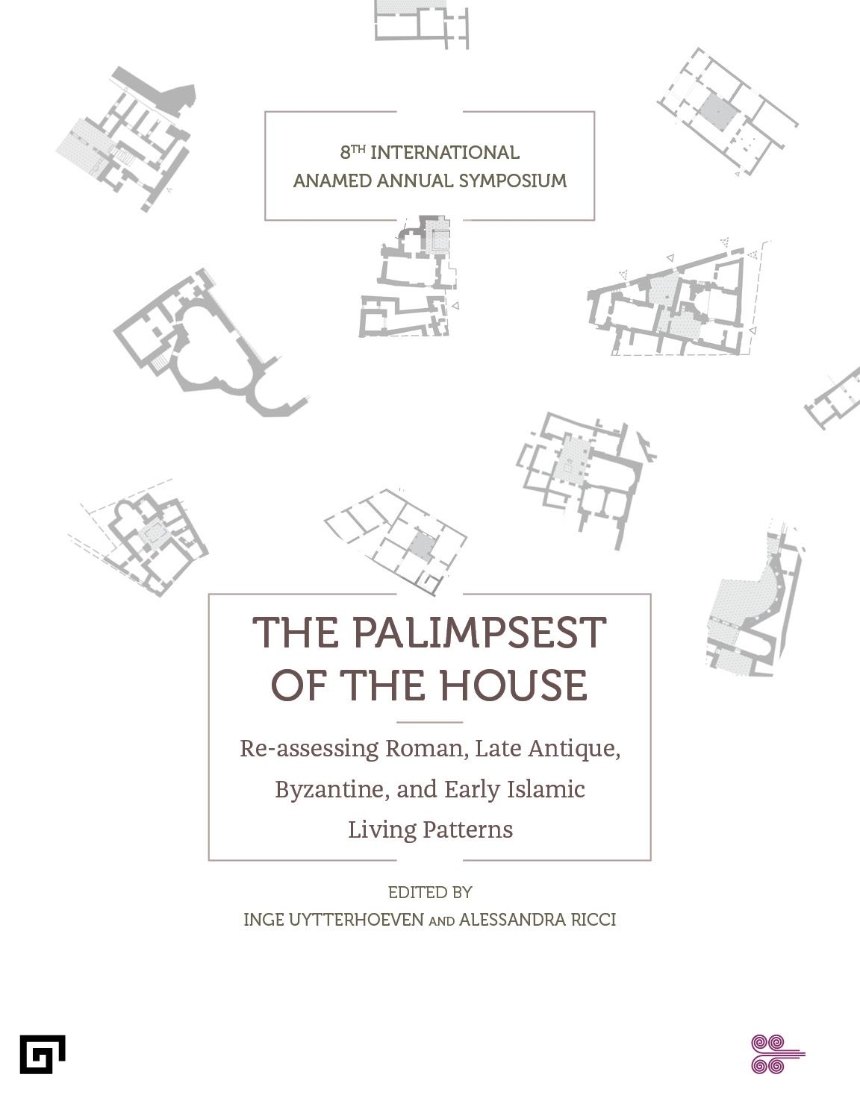The Palimpsest of the House
Re-assessing Roman, Late Antique, Byzantine, and Early Islamic Living Patterns
9786057685841
Distributed for Koç University Press
The Palimpsest of the House
Re-assessing Roman, Late Antique, Byzantine, and Early Islamic Living Patterns
An interdisciplinary reassessment of a vital and understudied field.
Material remains of houses and textual evidence for private living are crucial to our understanding of the architectural and decorative characteristics of the ancient house and the way private space was used. As buildings in which a range of activities could take place, ancient houses constitute an indispensable source for understanding social, economic, political, and religious aspects of past societies. However, despite their invaluable significance for our knowledge of ancient times, they remain a largely underappreciated research field. This volume intends to add a contribution to housing studies by using a broad diachronic and transcultural approach that addresses Roman, Late Antique, Byzantine, and the Early Islamic periods. The contributions are based on papers presented at the 8th International ANAMED Annual Symposium The Palimpsest of the House: Re-Assessing Roman, Late Antique, Byzantine, Early Islamic Living Patterns (Koç University Research Center for Anatolian Civilizations in Istanbul, 2013). The volume focuses on the developments, continuities, changes, and exchanges private housing across the Mediterranean underwent in these time periods, giving ancient Constantinople, the venue of the symposium, special attention. All contributions present up-to-date results and interpretations of field and research projects as well as new readings of literary and epigraphical evidence.
Of the multiple perspectives that can be explored when studying ancient housing, this volume opts for a diachronic and interregional approach prioritizing a focus on the architectural remains of urban, suburban, and rural upper-class houses, which due to their often century-long occupation allow retracing different building and occupation layers and thus to study them as “palimpsests.” By considering a broad time frame and utilizing a cross-cultural viewpoint, the volume intends to reflect on transitional periods and the impact of historical events and investigates patterns of networks, encounters, and (mutual) exchanges.
Material remains of houses and textual evidence for private living are crucial to our understanding of the architectural and decorative characteristics of the ancient house and the way private space was used. As buildings in which a range of activities could take place, ancient houses constitute an indispensable source for understanding social, economic, political, and religious aspects of past societies. However, despite their invaluable significance for our knowledge of ancient times, they remain a largely underappreciated research field. This volume intends to add a contribution to housing studies by using a broad diachronic and transcultural approach that addresses Roman, Late Antique, Byzantine, and the Early Islamic periods. The contributions are based on papers presented at the 8th International ANAMED Annual Symposium The Palimpsest of the House: Re-Assessing Roman, Late Antique, Byzantine, Early Islamic Living Patterns (Koç University Research Center for Anatolian Civilizations in Istanbul, 2013). The volume focuses on the developments, continuities, changes, and exchanges private housing across the Mediterranean underwent in these time periods, giving ancient Constantinople, the venue of the symposium, special attention. All contributions present up-to-date results and interpretations of field and research projects as well as new readings of literary and epigraphical evidence.
Of the multiple perspectives that can be explored when studying ancient housing, this volume opts for a diachronic and interregional approach prioritizing a focus on the architectural remains of urban, suburban, and rural upper-class houses, which due to their often century-long occupation allow retracing different building and occupation layers and thus to study them as “palimpsests.” By considering a broad time frame and utilizing a cross-cultural viewpoint, the volume intends to reflect on transitional periods and the impact of historical events and investigates patterns of networks, encounters, and (mutual) exchanges.
Table of Contents
Abbreviations
Inge Uytterhoeven and Alessandra Ricci, Introduction
Hannah Platts, Identity or Identities? Defining Rome’s Elite and the Elite Roman “Productive” Villa
Elisabeth Rathmayr, The Significance of the Ephesian “Terrace Houses” as Residences of the Elite in the Greek East
Veronika Scheibelreiter-Gail, Entrance Areas of Ancient Houses and the Multiple Aspects of their Inscriptions and Symbols
Inge Uytterhoeven, Splendid Luxury. Representation and Display in the Roman and Late Antique Urban Elite Houses of Asia Minor
Lale Özgenel, The Nature of the “Courtyard House”: Sampling Late Antique Houses in Asia Minor
Pauline Piraud-Fournet, A Late Antique Palace in Bostra (Bosra, Syria), the Seat of the Archbishop of the Provincia Arabia in the sixth century CE
P. M. Michèle Daviau, A House as Palimpsest: The Reshaping of Building 600 at Tall Jawa, Jordan
Alessandra Ricci, Ernest Mamboury, the Late Antique Residential Complex at Rhegion (Küçükçekmece, Istanbul) and its Architecture
Rahmi Asal, The Istanbul Archaeological Museums’ Excavations in the Asian Hinterland of the City: An Interim Report
Contributors
Index
Inge Uytterhoeven and Alessandra Ricci, Introduction
Hannah Platts, Identity or Identities? Defining Rome’s Elite and the Elite Roman “Productive” Villa
Elisabeth Rathmayr, The Significance of the Ephesian “Terrace Houses” as Residences of the Elite in the Greek East
Veronika Scheibelreiter-Gail, Entrance Areas of Ancient Houses and the Multiple Aspects of their Inscriptions and Symbols
Inge Uytterhoeven, Splendid Luxury. Representation and Display in the Roman and Late Antique Urban Elite Houses of Asia Minor
Lale Özgenel, The Nature of the “Courtyard House”: Sampling Late Antique Houses in Asia Minor
Pauline Piraud-Fournet, A Late Antique Palace in Bostra (Bosra, Syria), the Seat of the Archbishop of the Provincia Arabia in the sixth century CE
P. M. Michèle Daviau, A House as Palimpsest: The Reshaping of Building 600 at Tall Jawa, Jordan
Alessandra Ricci, Ernest Mamboury, the Late Antique Residential Complex at Rhegion (Küçükçekmece, Istanbul) and its Architecture
Rahmi Asal, The Istanbul Archaeological Museums’ Excavations in the Asian Hinterland of the City: An Interim Report
Contributors
Index

